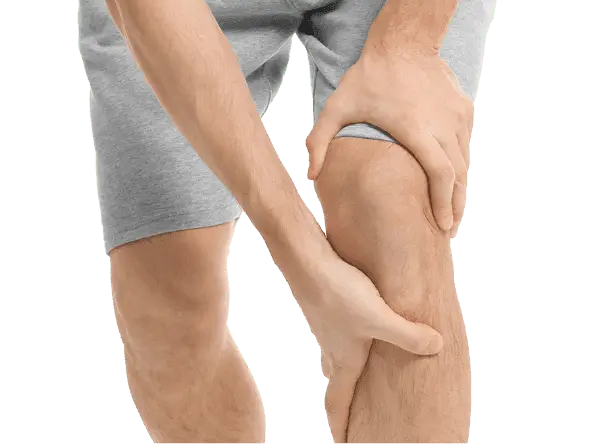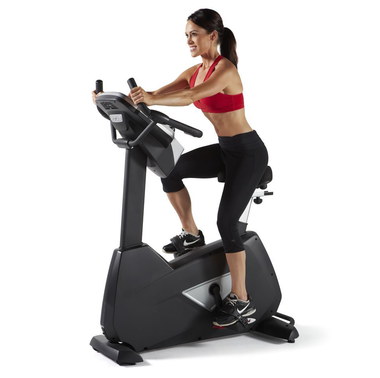KNEE PAIN
Knee pain is one of the most common musculoskeletal complaints that affects peoples of all ages.
Knee pain can result from injuries of traumatic nature or due to complications from medical conditions.
Depending on the structures involved, pain can be localized to a specific area or be felt all
around the knee.
ANATOMY OF KNEE
The knee joint is a hinge joint. Other than bearing the weight of the body, it’s primary function is to bend, straighten and rotate to a small degree. To achieve this function, the knee joint relies on a number of structures.
Bones
Knee joint consists of four bones to provide structure and weight-bearing ability.
- Lower end of thigh bone (femur)
- Upper part of shin bone (tibia)
- Knee cap (patella)
- Fibula (not involved in weight-bearing, but provides attachments for ligaments and tendons)
Ligaments
Four important ligaments connect the two big bones, providing multi-directional stability.
- Cruciate ligaments
Anterior cruciate ligament (ACL)
Posterior cruciate ligament (PCL)
- Collateral ligaments
Medial collateral ligament (MCL)
Lateral collateral ligament (LCL)
Cartilage
- Glossy cartilage lines the end of each bone to protect and allow smooth movements against each other with almost no friction.
- Meniscus is another type of strong cartilage that lines the upper surface of the tibia bone to cushion and stabilize the knee.
Tendons
There are two important tendons located on the front of the knee joint.
- Quadriceps tendon is a strong durable tissue that extends from the quadriceps muscle and connects it to the knee cap.
- Patella tendon connects the knee cap to the tibia bone.
Bursa
Bursa are fluid filled sacs that are found in areas that require the most protection. They occur where ligaments, muscles, skins, tendons or bones rub together.
Muscles
Many muscles cross the knee joint, some of which cross from the hip or ankle joints. Due to this, some people may experience knee pain as a result of muscle imbalances such as weakness, poor flexibility and or dynamic control.
CAUSE OF PAIN
Some of the common causes of knee pain include:
- Ligamentous sprain
- Meniscus injuries (bulge or tears)
- Fracture or dislocation
- Tendinitis, Sprains
- Bursitis
- Calcification
- Baker’s cyst
- Arthritis (osteoarthritis)
- Overuse syndromes (patella-femoral syndrome, chondromalacia)
- Autoimmune conditions (Infection, Gout, Lupus, rheumatoid arthritis)
WHEN TO SEEK HELP
Consult your doctor or physiotherapist if your symptoms have not subsided after one-week of consistent self-management (RICE, pain medications or alternative pain-relieving modalities), or if your knee pain is stopping you from managing your hobbies or day to day activities.
Immediate medical attention:
Knee pain from with the following signs and symptoms may require immediate attention:
- Severe pain
- Pain that does not resolve with rest
- Sudden swelling or bruising
- Clicking or locking of the knee
- Inability to bend or straighten the knee
- Inability to weight bear
SIGNS AND SYMPTOMS
- Pain
- Swelling
- Bruising
- Stiffness
- Clicking, locking
- Redness
DIAGNOSIS:
Treatment of your knee pain will depend on its underlying cause. So, it is all about the diagnosis.
A focused subjective and physical examination of your knee will be performed by your physiotherapist.
Subjective
Your physiotherapist will ask a range of questions
- Location of pain – front or behind the knee
- Description of pain – dull ache or sharp
- The behavior of pain – constant or intermittent
- Aggravating and easing factors
- General health
- Goals of treatment
Physical assessment
Your physiotherapist will inspect your knee joint to diagnose the source and the potential underlying cause(s) of pain.
You may be referred to have radiological Imaging to make or confirm the diagnosis.
Radiology
TREATMENT
In most cases, individuals suffering from knee pain respond well to conservative modes of treatment (pain relief, physiotherapy, acupuncture, etc). Surgical intervention may be required where conservative management has failed to optimize function and reduce pain.
CONSERVATIVE MANAGEMENT
A self-management remedy to control inflammation (pain and swelling) in acute or chronic knee pain is using the ‘RICE’ principle (rest, ice, compress, elevate)
- Rest – refrain from activities that impose repetitive strain or aggravation of knee pain
- Ice – use an ice pack for 10-15 minutes, 2 to 3 times per day (with care)
- Compress – use a compression bandage to reduce swelling (not to be worn when sleeping)
- Elevate – using pillows elevate injured leg. This works best when the leg is higher than the level of heart, to use gravity to help facilitate the circulation of fluid.
Pain medications
Over the counter pain relievers such as non-steroidal anti-inflammatory medications (ibuprofen, celecoxib) play an important role in reducing inflammation and pain.
(Note: If you have problems with bleeding, stomach ulcers or other liver, kidney conditions, anti-inflammatory medications MUST NOT be consumed without consulting your doctor.
Visit your general practitioner for more information on what medications are right for you.
Physiotherapy
After establishing your diagnostic findings, your physiotherapist will devise a tailored recovery programme to help you manage your pain, improve strength and flexibility.
Your physiotherapist will work with you to advance your understanding of your symptoms and provide a range of exercises, stretches and self-managing strategies that will help you be in control of your recovery.
As required, your therapist may liaise with your doctor or other health professionals (acupuncturist, podiatrist, knee specialists) to facilitate your progress.
Acupuncture/Acupressure
Acupuncture and acupressure are two different options available for individuals suffering from pain and swelling. While both aim to help control inflammation and fasten healing and recovery, acupuncture involves inserting thin needles into the body, whereas acupressure relies on hand pressure and some forms of massage.
Steroid Injection
In some instances, knee injections are recommended by your physiotherapist or doctor to reduce inflammation and relieve pain.
SURGERY
Surgical intervention may be required where conservative management has failed to optimize function and reduce pain. In this case your physiotherapist will refer you to a surgeon for the opinion of care.
EXERCISES FOR KNEE PAIN
The thought of exercise when you have knee pain can be daunting. However, your trusted physiotherapist will work with you to provide specific ‘pain-free’ exercises to get you started on effective strengthening.
Alternatively, low-impact activities such as cycling or elliptical machines are great. Notice what feels right for you. Swimming, jogging in water, or water aerobics may be appropriate if skin integrity is maintained.
Note: muscle soreness after a hard workout is normal.
If you experience sharp, shooting, or sudden knee pain you must consult your physiotherapist or doctor.





